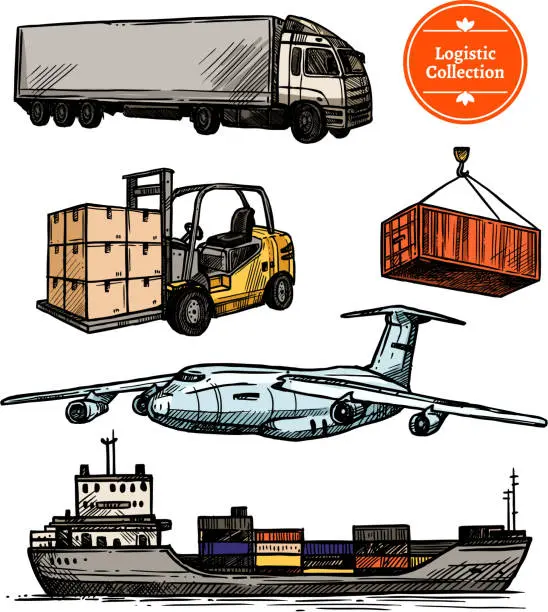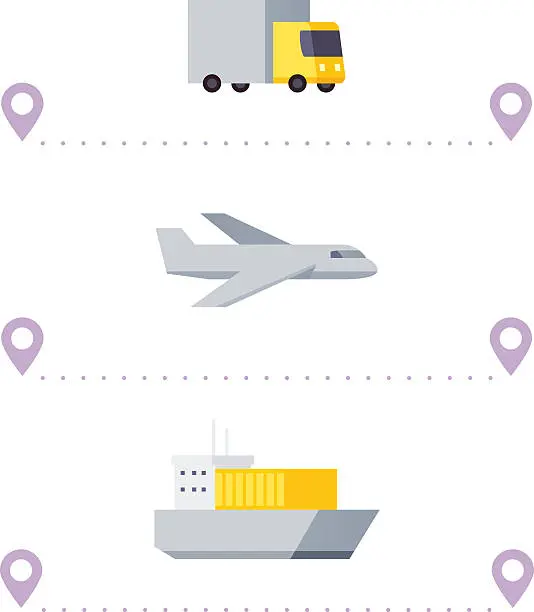
Building Bridges: The Role of Transport Infrastructure in Driving Economic Growth
- Admin
Transport infrastructure serves as the backbone of global commerce, facilitating the movement of people, goods, and services across regions and nations. From roads and railways to ports and airports, robust transport infrastructure is essential for connecting markets, fostering trade, and driving economic development. In this article, we'll delve into the significance of transport infrastructure, explore key components and challenges, and discuss the impact of infrastructure investment on economic growth and competitiveness.
The Significance of Transport Infrastructure
Transport infrastructure encompasses the physical facilities and networks that support the movement of goods and people, including roads, railways, bridges, tunnels, ports, airports, and intermodal terminals. Efficient transport infrastructure is vital for reducing transportation costs, minimizing travel times, and enhancing connectivity between production centers, markets, and consumers. It facilitates trade, tourism, and investment, spurring economic activity and creating employment opportunities.
Key Components of Transport Infrastructure
Several key components comprise transport infrastructure:
Roads and Highways: Roads and highways form the primary mode of transportation for goods and passengers, providing connectivity between urban centers, rural areas, and industrial zones. Well-maintained road networks improve accessibility, facilitate trade, and support economic growth and development.
Railways: Railways play a crucial role in transporting bulk cargo and passengers over long distances, offering cost-effective and energy-efficient transportation solutions. Rail infrastructure enhances connectivity between regions, reduces road congestion, and supports industries such as manufacturing, agriculture, and mining.
Ports and Harbors: Ports and harbors serve as gateways for international trade, facilitating the movement of goods between land and sea. Modern port infrastructure, including container terminals, cranes, and storage facilities, improves efficiency in cargo handling, reduces turnaround times, and enhances competitiveness in global markets.
Airports: Airports are critical nodes in the global transportation network, providing essential air connectivity for passengers and cargo. Efficient airport infrastructure, including runways, terminals, and air traffic control systems, supports tourism, trade, and business travel, driving economic growth and connectivity.
Challenges in Transport Infrastructure
Despite its significance, transport infrastructure faces several challenges:
Funding and Investment: Adequate funding and investment are essential for developing and maintaining transport infrastructure. Limited public budgets, competing priorities, and financing constraints often hinder infrastructure development and upgrades.
Maintenance and Upkeep: Regular maintenance and upkeep are necessary to ensure the reliability and safety of transport infrastructure. Aging infrastructure, inadequate maintenance, and deferred repairs can lead to deterioration, disruptions, and safety risks.
Environmental Impacts: Transport infrastructure projects can have significant environmental impacts, including habitat destruction, air and water pollution, and greenhouse gas emissions. Balancing infrastructure development with environmental conservation and sustainability is essential for minimizing ecological harm.
Technological Advances: Rapid technological advances, including autonomous vehicles, electric vehicles, and smart transportation systems, are reshaping the future of transport infrastructure. Embracing innovation and adopting new technologies are essential for enhancing efficiency, reducing emissions, and improving safety in transport operations.
Impact of Infrastructure Investment on Economic Growth
Infrastructure investment plays a vital role in stimulating economic growth and development:
Job Creation: Infrastructure projects create employment opportunities across various sectors, including construction, engineering, and transportation. Job creation stimulates consumer spending, boosts demand for goods and services, and drives economic activity.
Productivity and Competitiveness: Efficient transport infrastructure reduces transportation costs, enhances supply chain efficiency, and improves market access for businesses. Increased productivity and competitiveness enable firms to expand operations, attract investment, and contribute to economic growth.
Regional Development: Transport infrastructure development promotes regional connectivity and reduces disparities between urban and rural areas. Improved access to markets, education, and healthcare services stimulates economic development, reduces poverty, and enhances quality of life for residents.
Trade Facilitation: Transport infrastructure facilitates trade by reducing transit times, lowering transaction costs, and improving connectivity between trading partners. Enhanced trade flows stimulate economic growth, generate foreign exchange earnings, and promote international competitiveness.
Conclusion
Transport infrastructure is a cornerstone of economic growth and development, enabling connectivity, trade, and mobility in the global economy. By investing in modern, resilient infrastructure, governments and businesses can unlock new opportunities, stimulate economic activity, and build prosperous, sustainable societies. As we continue to navigate the challenges and opportunities of transport infrastructure development, let us prioritize investments that promote connectivity, inclusivity, and resilience, driving shared prosperity and progress for generations to come.
